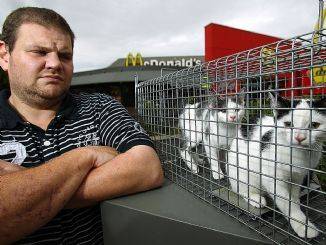Hugh Wirth confirms RSPCA opposition to breed bans
Despite the RSPCA making their position clear to the Minister, Peter Walsh prefers to remember what Hugh Wirth said in 2009. “The president of the RSPCA is on the public record as well in believing that this type of dog has no right to exist as well,” he said. Let’s see what Hugh Wirth had to say about this in 2010.
Minister Peter Walsh was recently happy with current laws
“I think we’ve actually got it fairly right at the moment so I don’t anticipate there being any changes”. Tune in from 2m40s to hear a prophetic interview with the Minister recorded several weeks before the Herald Sun Ayen Chol died and the Herald Sun started their #banthebreed campaign.
The Australian Veterinary Association Opposed Breed Bans
Despite having some of the most restrictive rules for dog owners in the world, dog attacks still happen in Australia. Vets say overregulation is not the answer.
“Following the tragic dog attack in Melbourne this week it’s vital that we redouble our efforts to improve education and socialisation of dogs and people,” said Dr Kersti Seksel from the Australian Veterinary Association (AVA).
“It’s understandable that people are now calling for the banning of some breeds, however all the good evidence available shows that this doesn’t work,” she said
“Unfortunately we believe the banning and overregulation of dogs in our communities could be part of the problem as this leads to poor socialisation and increased risk of attacks.
http://www.ava.com.au/mediarelease/vets-say-ban-deed-not-breed
So Who Is Supporting Breed Bans?
This clown again.





 I can’t help but wonder how many of these pets have been caught and taken to the pound by
I can’t help but wonder how many of these pets have been caught and taken to the pound by 

